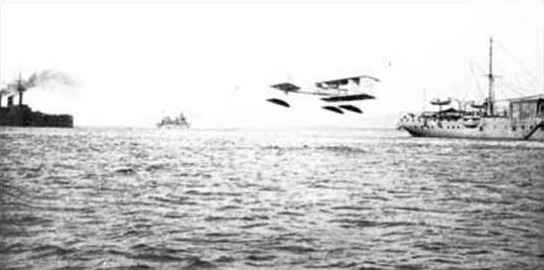Voisin Canard on:
[Wikipedia]
[Google]
[Amazon]
The Voisin Canard was an aircraft developed by
 The seaplane variant, fitted with floats designed by
The seaplane variant, fitted with floats designed by
Flights of Maurice Colliex on the Canard VoisinLes Canards de Gabriel Voisin (HTML)PDF file with images
{{Voisin aircraft Canard 1910s French experimental aircraft Single-engined pusher aircraft Rotary-engined aircraft Biplanes Canard aircraft Aircraft first flown in 1911
Voisin brothers
Aéroplanes Voisin was a French aircraft manufacturing company established in 1905 by Gabriel Voisin and his brother Charles, and was continued by Gabriel after Charles died in an automobile accident in 1912; the full official company name then ...
during 1910 and first flown early in 1911. It was named the '' Canard'' because of the resemblance of its forward fuselage to that of a duck's long neck while in flight. It was originally flown as a landplane: with the addition of floats it became one of the first seaplane
A seaplane is a powered fixed-wing aircraft capable of taking off and landing (alighting) on water.Gunston, "The Cambridge Aerospace Dictionary", 2009. Seaplanes are usually divided into two categories based on their technological characteri ...
s used by the French Navy
The French Navy (french: Marine nationale, lit=National Navy), informally , is the maritime arm of the French Armed Forces and one of the five military service branches of France. It is among the largest and most powerful naval forces in t ...
.
Design and development
The Canard was, even by the standards of 1910, a curiously regressive design, its layout reminiscent ofAlberto Santos-Dumont
Alberto Santos-Dumont ( Palmira, 20 July 1873 — Guarujá, 23 July 1932) was a Brazilian aeronaut, sportsman, inventor, and one of the few people to have contributed significantly to the early development of both lighter-than-air and heavie ...
's 14-bis
The ''14-bis'' (french: Quatorze-bis), (), also known as ("bird of prey" in French), was a pioneer era, canard-style biplane designed and built by Brazilian aviation pioneer Alberto Santos-Dumont. In 1906, near Paris, the ''14-bis'' made a m ...
of 1906.
As first flown at Issy-les-Moulineaux
Issy-les-Moulineaux () is a commune in the southwestern suburban area of Paris, France, lying on the left bank of the river Seine. Its citizens are called ''Isséens'' in French. It is one of Paris' entrances and is located from Notre-Dame Cat ...
by Maurice Colliex, the aircraft had an uncovered fuselage of wire-braced wood construction with the Rossel-Peugeot rotary engine at the rear and the front-mounted control surfaces consisting of an all-moving elevator divided into two halves, one either side of the fuselage, a rectangular balanced rudder mounted above the elevator, and a pair of short-span fixed horizontal surfaces with a high angle of attack mounted behind and below the elevators. Voisin's characteristic side-curtains were fitted to the outermost pair of interplane struts and roll control was achieved using trailing-edge ailerons on both upper and lower wings.
The aircraft was judged a success and Voisin manufactured a number of examples. There are variations between the individual production aircraft: the two examples flown in the French military aircraft trials in 1911 had a wingspan of .; one was powered by a Renault and the second by a Gnome. The number of sets of side curtains varied, some aircraft having two or even three sets.
Seaplane version
 The seaplane variant, fitted with floats designed by
The seaplane variant, fitted with floats designed by Henri Fabre
Henri Fabre (29 November 1882 – 30 June 1984) was a French aviator and the inventor of the first successful seaplane, the Fabre Hydravion.
Henri Fabre was born into a prominent family of shipowners in the city of Marseille. He was educated ...
, was initially built to the order of Prince Bibesco, who intended to use it make a flight across the Black Sea
The Black Sea is a marginal mediterranean sea of the Atlantic Ocean lying between Europe and Asia, east of the Balkans, south of the East European Plain, west of the Caucasus, and north of Anatolia. It is bounded by Bulgaria, Georgia, Rom ...
. It was first successfully flown from water on 25 April 1911.
One example was bought by the French navy in March 1912 to equip the seaplane tender '' La Foudre'', the first seaplane carrier in history. A second example was delivered to the Navy in December 1913.
Specifications
Notes
References
* Opdycke, Leonard E.Ŵ ''French Aeroplanes Before the Great War'' Atglen, PA: Schiffer, 1999Further reading
* *External links
Flights of Maurice Colliex on the Canard Voisin
{{Voisin aircraft Canard 1910s French experimental aircraft Single-engined pusher aircraft Rotary-engined aircraft Biplanes Canard aircraft Aircraft first flown in 1911